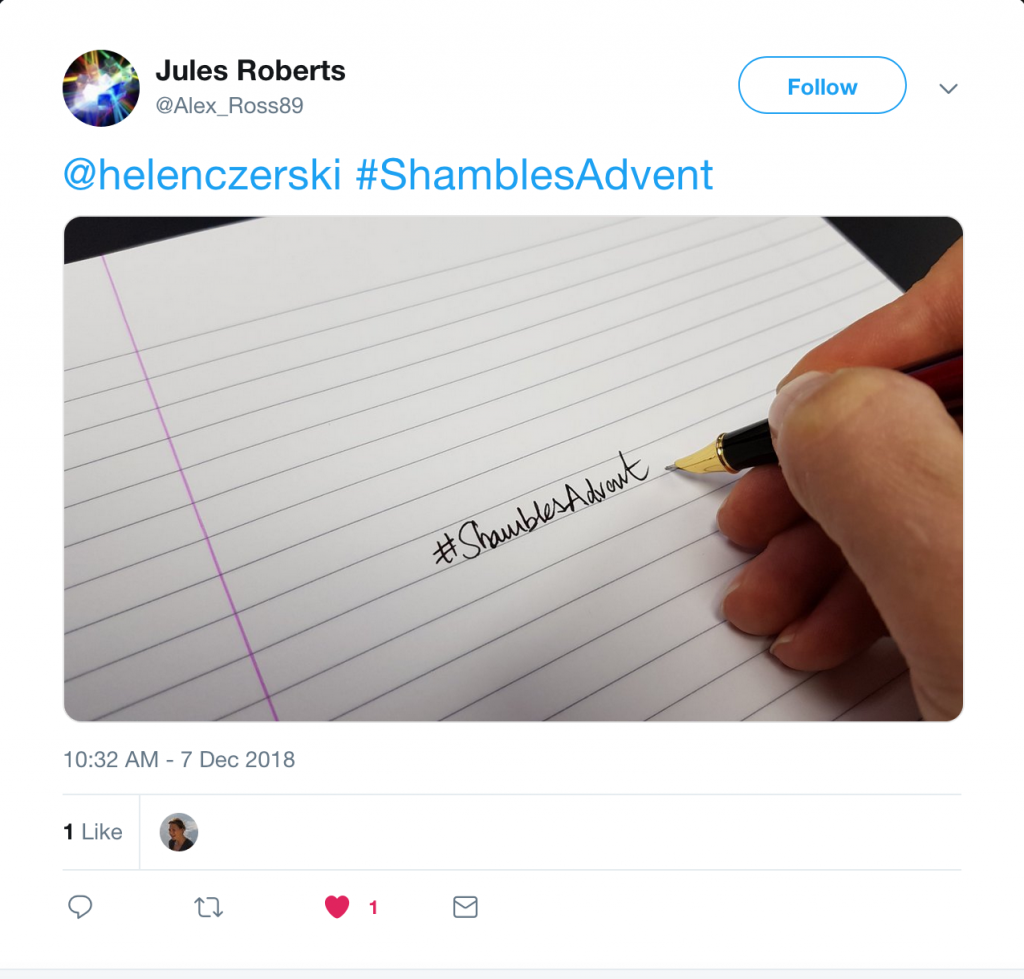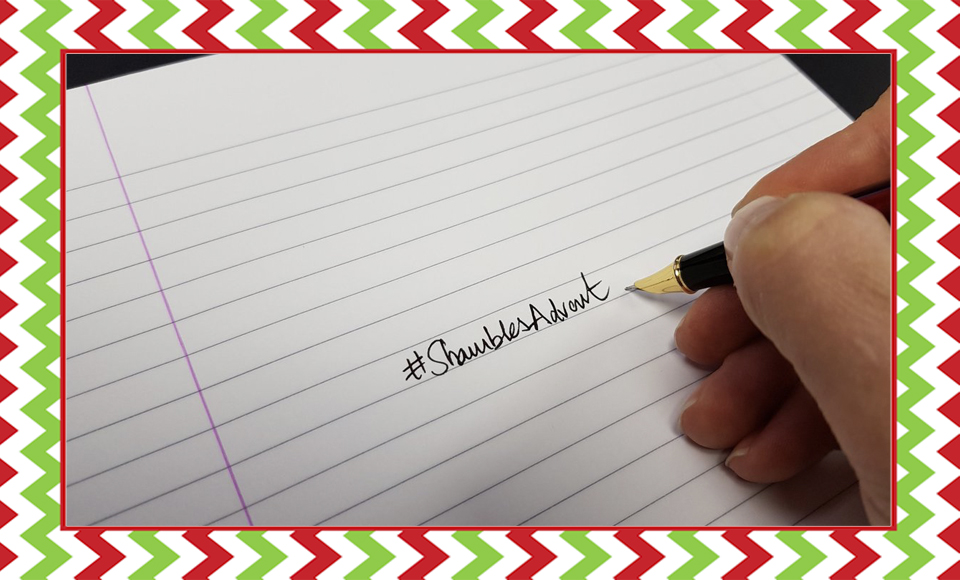Day 12 - Shambles Advent
Blog in a Teacup by Dr Helen CzerskiDay 12 – @Alex_Ross89
Every day until Christmas Dr Helen Czerski will be finding some cool, hidden science in pics of people’s every day lives. To get involved, tweet your pic to @helenczerski and @cosmicshambles with the hashtag #ShamblesAdvent

It looks as though @Alex_Ross89 is a fan of calligraphy, and it’s lovely to see a hashtag that isn’t on a screen. The proportion of us who still pick up a “proper” fountain pen on a daily basis must be pretty low, but even the most hardcore fans of an online life still have paper in their lives. Books, receipts, birthday cards, menus, craft materials and certificates… there’s something about the feel and aesthetics of paper that can’t be replaced.
But for all its variety, paper is beautifully simple when you get down to brass tacks. It’s almost completely made up of cellulose, the most abundant natural polymer on Earth. Globally, plants produce about 1500 billion tons of cellulose each year – read that back, because it’s a gigantic number. And all of those billions of tons are made from one very simple building block linked end to end, again and again and again: glucose. It’s a small ring molecule (a sugar) made of six carbon atoms, 12 hydrogen atoms, and 6 oxygen atoms, and it’s built by plants. A plant is just a factory for this fundamental process – using sunlight to convert carbon dioxide and water into sugar. And then individual glucose molecules were linked together into chains to form cellulose before being incorporated into the structure of a tree. And there it stayed, until the tree was harvested to produce this paper. So the paper in this picture, and every other piece of paper you see around you, was built by plants from air and water. Cellulose is a spectacularly successful molecule, and like all the best successes, it’s so good at its job that we barely ever notice it. But isn’t it fantastic that paper actually does grow on trees?
Read all of Helen’s other #ShamblesAdvent entries here
The Cosmic Shambles Network relies on your support on pledges via Patreon so we can continue to provide great, new, exciting content without the need for third party ads or paywalls.
For as little as $1 a month you can support what we do and get some great rewards for doing so as well. Click the Patreon logo to pledge or find out more.
 Dr Helen Czerski is a physicist, first and foremost, but she’s acquired a few other labels along the way: oceanographer, presenter, author and bubble enthusiast. A regular on The Cosmic Shambles Network, she has also presented a number of acclaimed documentaries for the BBC and her first book, Storm in a Teacup, which looked at the physics of every day things, was a bestseller. Recently she was awarded the prestigious William Thomson, Lord Kelvin Medal and Prize from the Institute of Physics.
Dr Helen Czerski is a physicist, first and foremost, but she’s acquired a few other labels along the way: oceanographer, presenter, author and bubble enthusiast. A regular on The Cosmic Shambles Network, she has also presented a number of acclaimed documentaries for the BBC and her first book, Storm in a Teacup, which looked at the physics of every day things, was a bestseller. Recently she was awarded the prestigious William Thomson, Lord Kelvin Medal and Prize from the Institute of Physics.
If you would like to reuse this content please contact us for details
Subscribe to The Cosmic Shambles Network Mailing list here.


